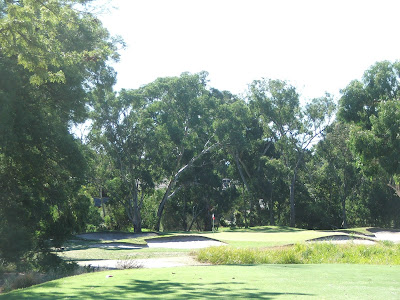
Alister MacKenzie did the routings of both the East and West courses in the mid 1920s. Club member Alex Russell and superintendent Michael Morcon oversaw the implementation and building of the courses and thus are co-credited with the design since MacKenzie spent only 23 days there.
Like many great designs including Pine Valley and Sand Hills, the course has wide open fairways that are playable for the average golfer, yet demand the more skilled player to drive the ball into dangerous corners to get close to the flags. It is also compared to Pine Valley because it is a “second shot” course.
Like Pine Valley, the first thing that strikes you when seeing Royal Melbourne is the scale of the course. It has a “big” feel to it with holes routed around big sand dunes, forced carries over bracken fern and sweeping fairways with big doglegs. The World Atlas of Golf describes Royal Melbourne as a “kaleidoscope experience of obstacles and emotions.”
The second hole (West), is a 485 meter (add 10% for yards) par five of excellence with a formidable sand bunker off the tee on the left and a big sweeping fairway to a well protected green.
The green has appropriately been described as “lethal.”
The second shot on the 10th features a short, blind pitch over this bunker
The small green on the 10th hole, Royal Melbourne West


We played at Royal Melbourne for a pittance! The course has been undergoing renovations in preparation for the upcoming Presidents Cup matches and thus the course was not in the usual condition they expect, so they didn’t feel it was right to charge us. To be honest, and as you can see from the photos, the course was in very good shape. They must have an extremely high standard that they keep the course in if the conditions we played in weren’t considered good. This was a very classy move on the part of Royal Melbourne.
Congratulations to one of my mates and playing partners, Smythe, who shot a 78 on one of the premier courses in the world the first time he played it! Well done; an impressive display of golf.
Aside from one of the best golf courses in the world, Royal Melbourne also has a genteel and historic feel to it. I suggest looking around the large room located off the entrance to the clubhouse which has an impressive display of memorabilia and old course maps.
The manicured hedges add a classy touch to the entry drive:

As do the grass tennis and lawn bowling courts:














